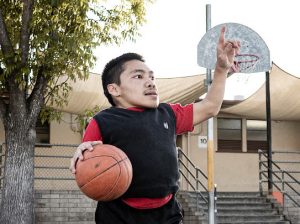
Finding treasure maps and pretending to search for hidden riches is a favorite childhood memory for many. For those adventure-seekers, growing up meant putting away the games and giving up on finding treasure — until now.
Geocaching is gaining popularity as a real-life, grown-up treasure hunt. With a modern, technological twist, this company has had people crisscrossing the globe for more than a decade. Geocachers (as they call themselves) use GPS devices to hide their own caches of treasures and to seek out other players’ treasures.
After registering online for free, seekers can start the search for caches. Usually, caches are small containers that contain logbooks where the geocacher signs their name and enters the date they found it. Larger containers, such as plastic storage boxes, often hold items for trading that consist of trinkets or small toys. These can be hidden in stairwells, light posts or even bushes and can be discovered by coordinates using a GPS.
No longer simply for the technology buffs who first created the game, it can now be enjoyed by practically anyone, including families, couples and kids alike. Most geocachers who take on the challenge are able to walk, bike or drive to a nearby hidden cache, making this treasure hunt accessible for people of all ages.
Don’t think there’s one close by? It is almost a guarantee hunters will find at least one cache within a mile away. Geocaching.com shows that caches are currently placed in more than 100 countries around the world and on all seven continents. There are almost 1.3 million active geocaches published on multiple websites devoted to the game, and there are more than 5 million geocachers worldwide.
Debra Slonim is one of those millions on the hunt.
“I’ve only been geocaching since Dec. 2,” Slonim said. “The guy I’m now dating got into it from watching an episode of CSI, and they solved a murder that way … I just thought it sounded so interesting I wanted to try it out.”
While Slonim has done about 40 treks to find caches, some participants have completed more. Committed geocachers have searched for thousands of the hidden treasures, even becoming mini-celebrities in the geocaching world. These enthusiasts have transformed the hobby into a full-fledged competition.
For seekers who want to dominate the geocaching world or just want to keep it simple, remember some caches are harder to find than others. Sometimes the cache is too hard to locate, thrown away by accident or even placed at the wrong coordinate. Slonim can attest to these mishaps, as she has often completed missions empty-handed despite a fun adventure.
“One day I went out and found only two out of eight I was looking for,” Slonim said.
Countless caches are still waiting to be discovered, some for the very first time. A GPS-enabled device, online access and a sense of adventure are the only requirements for geocaching. While the treasures in the end won’t pay off all those student loans, geocaching’s exciting hunt is proof it’s all about the journey.









